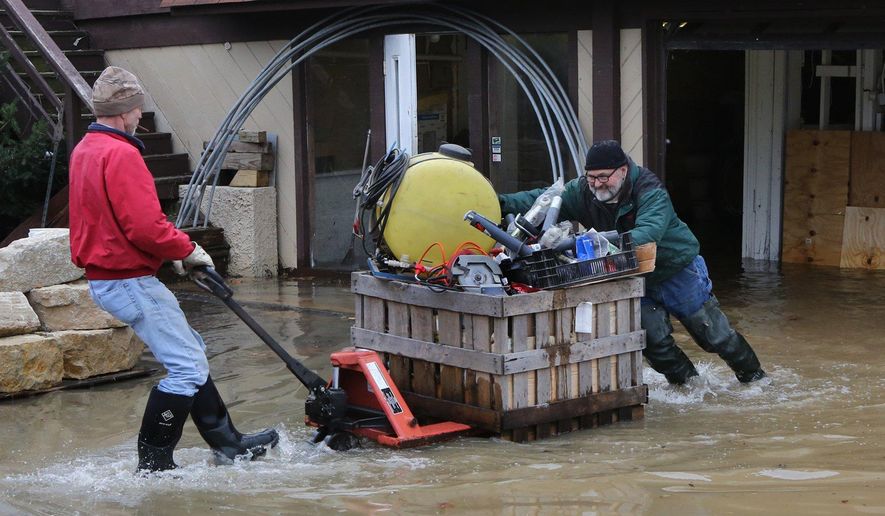CEDAR RAPIDS, Iowa (AP) - An elaborate system of temporary floodwalls is so far protecting thousands of homes and businesses in Cedar Rapids from major flooding.
Iowa’s second-largest city says its hastily erected 9.8-mile system of Hesco barriers and earthen berms is largely holding back the rain-swollen Cedar River, which crested Tuesday at its second-highest level on record.
City officials said some buildings and homes near the river had water in their basements.
Here’s the situation in Cedar Rapids:
___
HOW BAD IS THE DAMAGE SO FAR?
Relatively minor. A small number of businesses and homes appear to have major water on their main levels, and many more have water in their basement.
___
WHAT DOES THAT SYSTEM ENTAIL?
Contractors erected nearly 10 miles of temporary barriers in just days, and 250,000 sandbags were filled and placed to protect homes and businesses. The city had some of the Hesco barriers for years for flood protection but this marks the first time they have been deployed in Cedar Rapids. The city bought the rest for $1.4 million from the University of Iowa, which had them in storage. The barriers are filled with sand. City workers and contractors backed up the system, looking for any weaknesses and plugging them or pumping out water that seeped through.
___
WHAT IS THE CITY’S CONCERN NOW?
City officials say their efforts are now focused underground, where the sewer system is under tremendous pressure. They worry that it will send water gushing into parts of the city and create dangerous conditions for anyone nearby. To combat the threat, city workers were pumping water from the sewer back into the river and keeping a close eye on pipes. A city spokeswoman said Wednesday morning that the barriers were holding and that pumps were handling seepage and storm sewer backup.
___
WHY IS THE CITY RELYING ON TEMPORARY STRUCTURES?
A lack of money to build a permanent system, which could cost up to $500 million.
The city has struggled since the 2008 flood to find the funding necessary to create a comprehensive flood protection system for low-lying areas on both sides of the river. Residents twice voted down tax increases that would help pay for it.
The city has since secured a $270 million funding commitment from the state and now says it has the local money it will need. The last part of the plan is the federal share. About $73 million has been authorized for the project, but not appropriated. City Manager Jeff Pomeranz says the city has been told by the White House that it will be tough to get funding for the project because others have a better cost-benefit ratio. Pomeranz says the federal money is critical.
___
HAVE RESIDENTS IN THE POTENTIAL FLOOD ZONES BEEN EVACUATED?
Yes. Downtown and many nearby areas are largely abandoned. Businesses are closed, roads are blocked off and thousands of residents have temporarily left for shelter elsewhere. Some stayed behind despite repeated urging from city officials to get out.
___
WHEN WILL THE CITY RETURN TO NORMAL?
It depends on how fast the river levels lower. City officials say they will likely not reopen key streets and the evacuated areas for a few days as the river remains far above flood stage. Schools will remain closed through the end of the week and are scheduled to re-open on Monday. City leaders say they will not feel comfortable until the river falls below 18 feet. The National Weather Service expects the river to return below flood stage of 12 feet Sunday.
___
HAS ANYONE BEEN INJURED?
Firefighters and police officers rescued a woman who was swept away by the river Monday afternoon. She was able to cling to a tree until emergency responders could reach her and get her to safety.




Please read our comment policy before commenting.